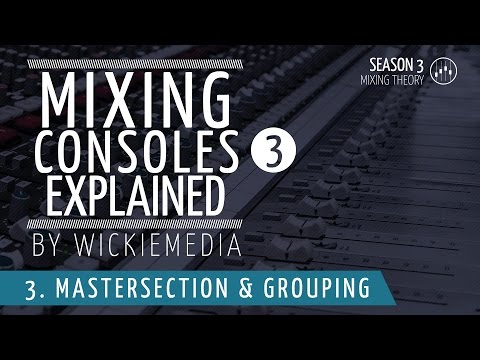Mixing Consoles Explained – Part 3 of 3
In this episode I’m going to take a look at the routing inside of a mixing console.
The signals on our mixing console run through the channel-strips, the way these are built up is pretty much an universal standard.
We will look at the channelstrip and the master section of a Solid State Logic console and take a further look at the signalflow.
Smaller mixers will offer fewer features than a mixing console of this caliber, but still there will be a lot of similarities as we will find out later this season.
